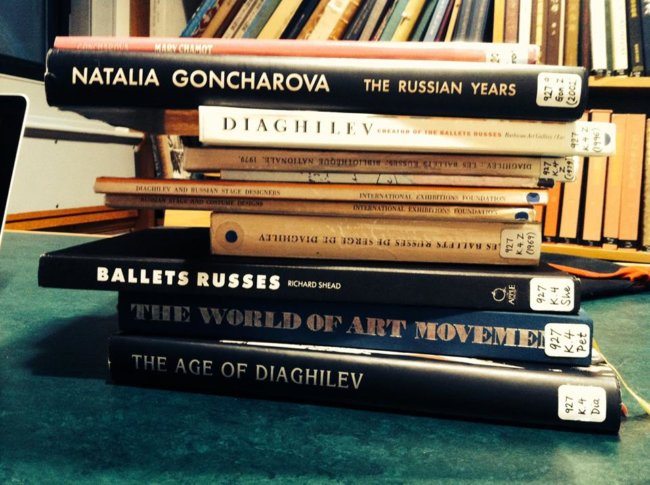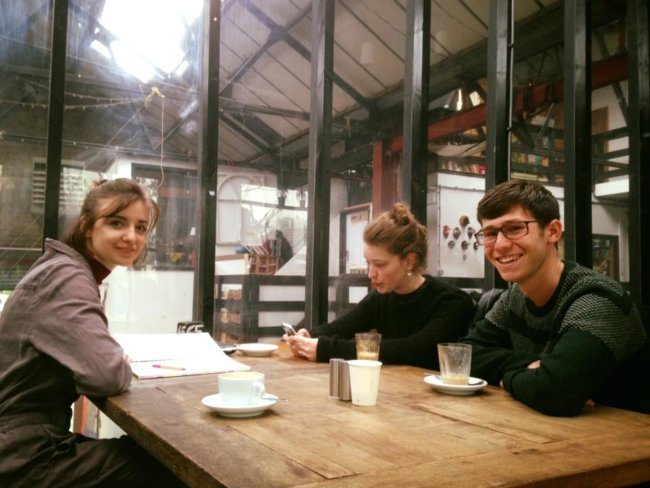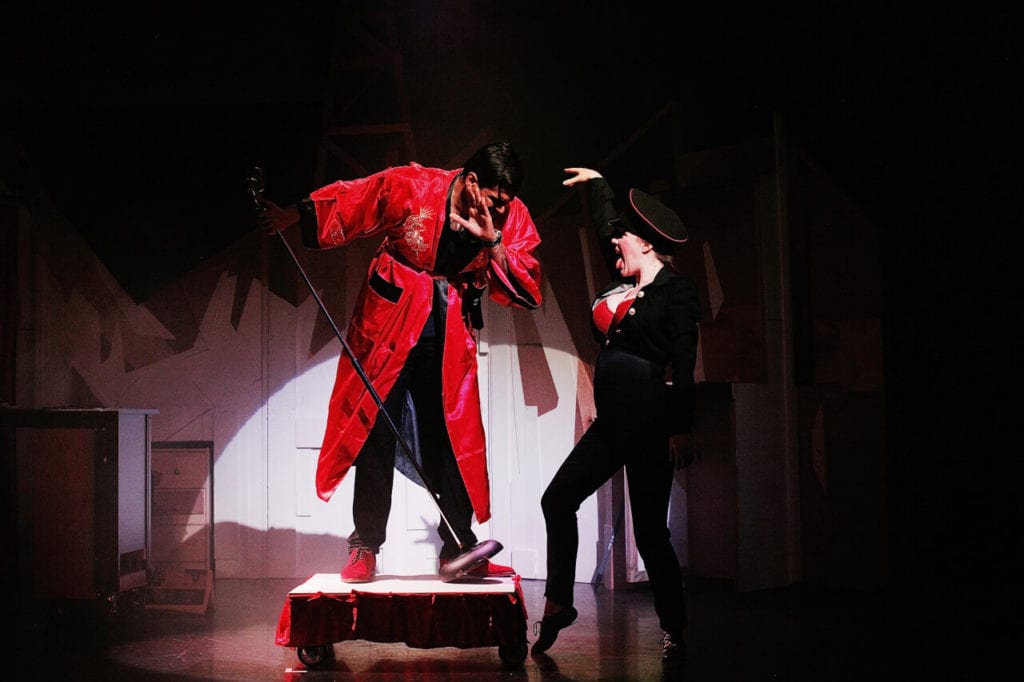Director Cecilia Stinton on how she discovered the libretto of Collision and how Spectra Ensemble decided to bring Schwitters’ text to life. Collision if part of Grimeborn 2017, on stage 17-19 August. More info and tickets (£17, £14 concessions) here.
One summer afternoon after finishing my Master’s degree, I found myself in the library, aimlessly leafing through all the books I had never got round to reading over the course of the year. After the high of staging Kandinsky’s 1909 colour opera The Yellow Sound with Spectra Ensemble, I felt deflated and decidedly lacking in the psychedelic verve of the early twentieth-century avant-garde. Reckoning with job applications and the dispersal of friends and course mates, I had the post-degree blues, and the library made the ideal space to sit my malaise out in solitude.

As it turned out, I was not as anonymous as I had hoped: the brilliant and beady Art History librarian, Clare Hills-Nova, approached me one day with an idea. She had noticed my book requests and listless drifting around her library, and suggested that I looked over something she had recently come across: a 1928 opera libretto by the German visual artist, Kurt Schwitters. Schwitters had won a libretto competition in Vienna with the text, but a musical score had never been completed. My Master’s had involved looking at a moment in the early twentieth century when visual artists became enamoured of the idea of performance, multimedia and (more specifically) opera. Dutifully, therefore, I scanned the relevant pages – it is hard not to take seriously a librarian with the presence and beauty of a Tilda Swinton doppelgänger – and saved them to peruse during a bus journey.
Some days later on that drizzly commute, I leafed through the pages of Collision: A Comic Opera in Banalities. In a matter of minutes, Schwitters’ weird characters had leapt from the page and into my imagination. Moving between loci of modernity in 1920s Berlin (an observatory, a broadcasting station, Potsdamer Platz and the city airport) his dramatis personae included a bizarre assortment of characters wielding different quantities of power, fame and insanity: Virmula, “an astronomer”; Alma, “his assistant”; Masterly, “the High Commissioner of Civil Order”; Rommel, “janitor of the observatory”; Mrs Rommel, “his mother”; Taa, “a dancer”; Paulsen, “a concert singer” – and the list continued. Written just before the Great Depression, Schwitters’ text examined the best and the worst of humanity in the face of the impending doom of the collision.
Combing light and dark, moments of beauty and cutting satire, I read the libretto at what was for me a lightning pace. In a matter of minutes, Schwitters had distracted me, made me laugh and put my own post-degree catastrophe into blistering perspective. With his characters still sauntering through my thoughts (“you know, my dear child, I have a wonderful idea: let’s spend the world’s-end weekend together”) there was only one thing to do: I corralled my Spectra Ensemble colleagues and we organised a reading of the text. Encouraged by the peals of laughter that emanated from my living room, Collision’s fate was decided: Spectra Ensemble would bring Schwitters’ text to life, give or take a few necessary cuts (Mrs Rommel a casualty, alas) and two years of intense research and graft, the lion’s share of which was taken on by the brilliant composer Lewis Coenen-Rowe.

Bringing Spectra Ensemble’s interpretation of Collision to Grimeborn, therefore, marks the end of a rich and highly collaborative process. The team can’t wait to share the show with audiences this month and I hope that, in some distant corner of the universe, Kurt Schwitters is having that last laugh.
Cecilia Stinton, Director


